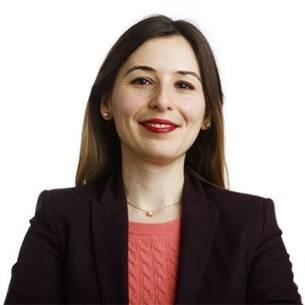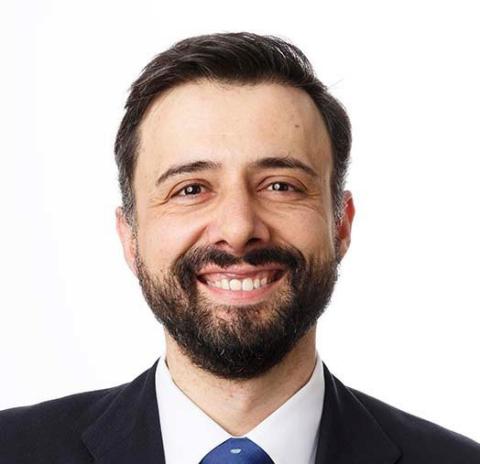Reaching the Last Mile, Family in Tow
What does success look like? Faced with everyday work pressures and uncertainties, it can be very easy to lose sight of where we are headed — let alone, how we plan to get there. No matter what kind of work you’re doing, “beginning with the end in mind” is a good way to get back to basics.
To help teams and organizations within the United Nations (UN) do just this, the United Nations System Staff College (UNSSC), at the behest of the UN Secretary-General António Guterres, has developed the UN Innovation Toolkit (UNIT). It is made up of a set of tools to advance innovation in the UN. One of the tools in UNIT is the “Headlines of the Future” module. The tool, guides you through a simple, step-by-step process, and gives you license to daydream, as you construct a magazine cover — from the future — to celebrate your group’s success. Along the way, you can learn a lot about your goals, your challenges, and what it is you are really aiming for.
Cultivating a forward-looking mindset
I recently had the opportunity to join an innovative IFAD women’s mentorship program, in which five mid-level professional women were mentored, as a group, by a male senior manager. In addition to our role as mentees, each woman also acted as a mentor to the other women in the group. The women’s informal network (the “WIN network”) that started this mentorship programme spans the IFAD family, past and present, and includes members from other UN agencies across the globe, reaching from Rome to Cairo, Nairobi, Delhi, Abidjan, Lima and New York City, to just name a few. Seeking to foster innovation within IFAD, the group mentorship programme is designed to make it easier for women to access the kind of senior male mentorship that, according to literature, tends to be more easily available to male colleagues. Its aim is also to nurture a team-based environment and further strengthen relationships among female peers.
The mentoring process mirrored many of the steps in the “Headlines of the Future” tool. One of the most resounding lessons I learned was indeed how to cultivate a more outward-oriented, forward-looking mindset — with my eyes set firmly on the future.
The first piece of advice our mentor gave us was to take time to understand what it is you want and to clearly define the personal goals you are setting out to achieve. What energizes you? Or, as the “Headlines of the Future” tool puts it, “what are you focused on?”
For me, I realized this means working in such a way that I have the most impact, and can contribute to making a real difference in the lives of the most isolated communities — those who are part of the “last mile,” and therefore often overlooked. With the help of our mentor, I saw that, in order to accomplish this, I needed to take my management and leadership skills to the next level, so that I can effectively lead bigger teams down the road.
Defining Success
“What does success look like?” This is the next question to answer, when creating a headline of the future. As it turns out, success comes in all sizes. One of the helpful ideas our mentor shared with us was the importance of micro-actions – taking small, concrete and actionable “baby steps” towards success. He stressed the importance of connecting and reaching out, so that your work gains visibility. For me, this meant setting up a LinkedIn account — something I had long put off doing.
Our mentor also helped me to see my previous experience in terms of “half full” rather than “half empty". We talked about what it takes to lead a large team, a uniquely challenging step that many managers will have to take at some point in their careers. Along with his advice to take risks, even if you do not tick all the boxes, he encouraged me to look at my management experience in a new way. Instead of saying, “I’ve not yet managed a large team of multiple specialists at once,” I can say, “I have experience managing diverse small teams of specialists.”
With my personal experience as a guide, I’m sensitive to the needs of people, who find themselves in a particularly vulnerable situation. This includes rural families and especially young women who are exposed to increased risks of losing their livelihoods. Being able to make a small impact in the lives of these people is what drives me to make a difference and lead. So that’s one clear answer to the question, “Who are the impacted stakeholders?” Technical experts in the field, who come to me for advice on ways to get more exposure for their knowledge and innovations working with rural development projects, are another group of impacted stakeholders. Still, no man or woman is an island. Professional men and women also have private lives. Whether that means elderly family members, partners, children, friends or members of our communities, the people we love are also stakeholders in our decisions.
The Last Mile challenge
So, “What is your headline?” This is the fun part, thinking about what success might look like. For me, I think it is: “Reaching the Last Mile, Family in Tow.” This headline reflects a future in which I am able to help the people who most need it, while balancing the needs of my own family with my work.
Finally, the toolkit asks, "Who wrote it?” and “What is the publication date?” There are many good answers to these questions. Imagine the date was not 5 or 10 years from now, but 50. Maybe the writer is a woman who was mentored by someone I was able to mentor, at a future point in my career. The headline could be the same, but it also might be very different. Say, “Last Mile Challenge? Solved.”

